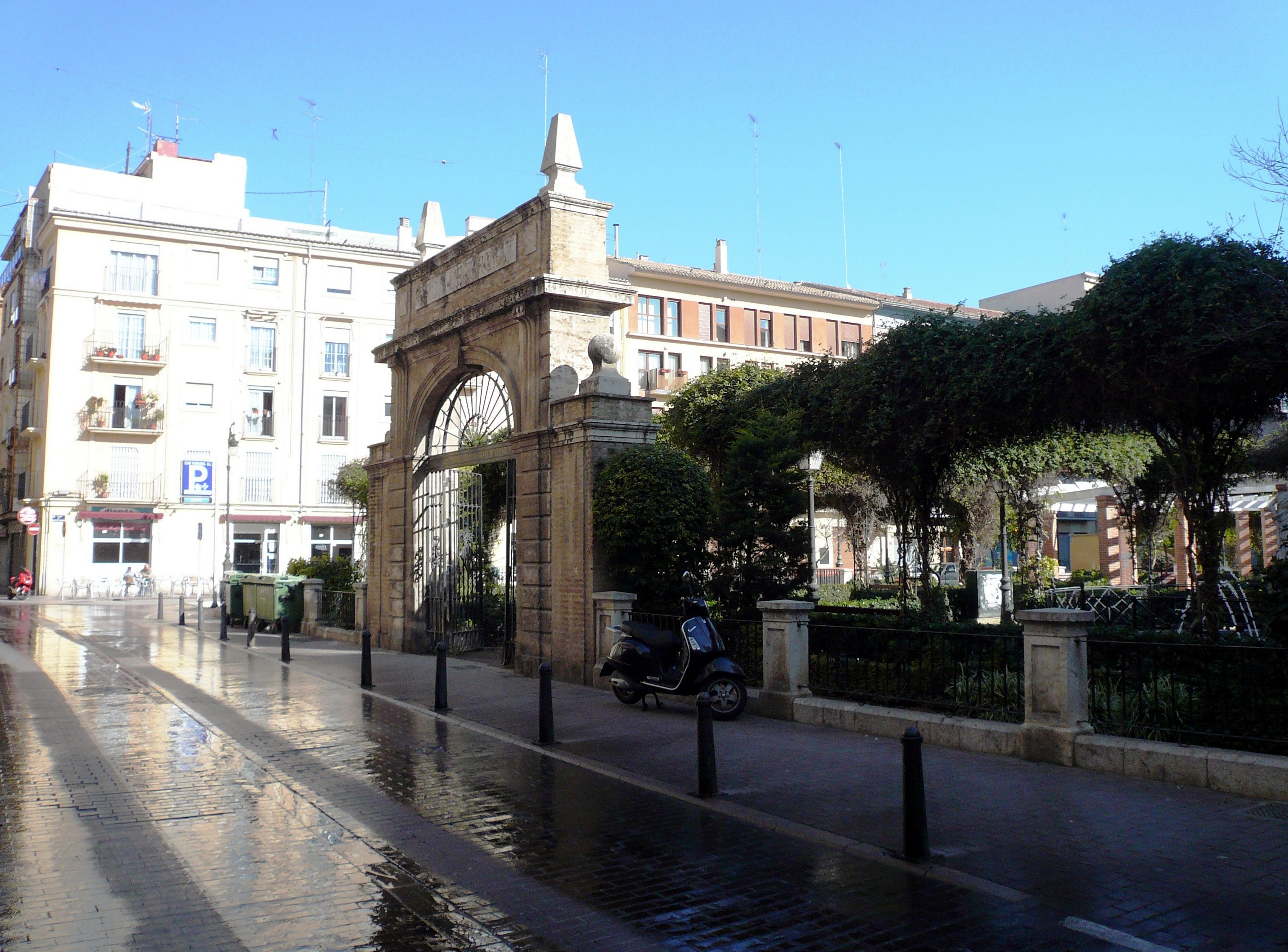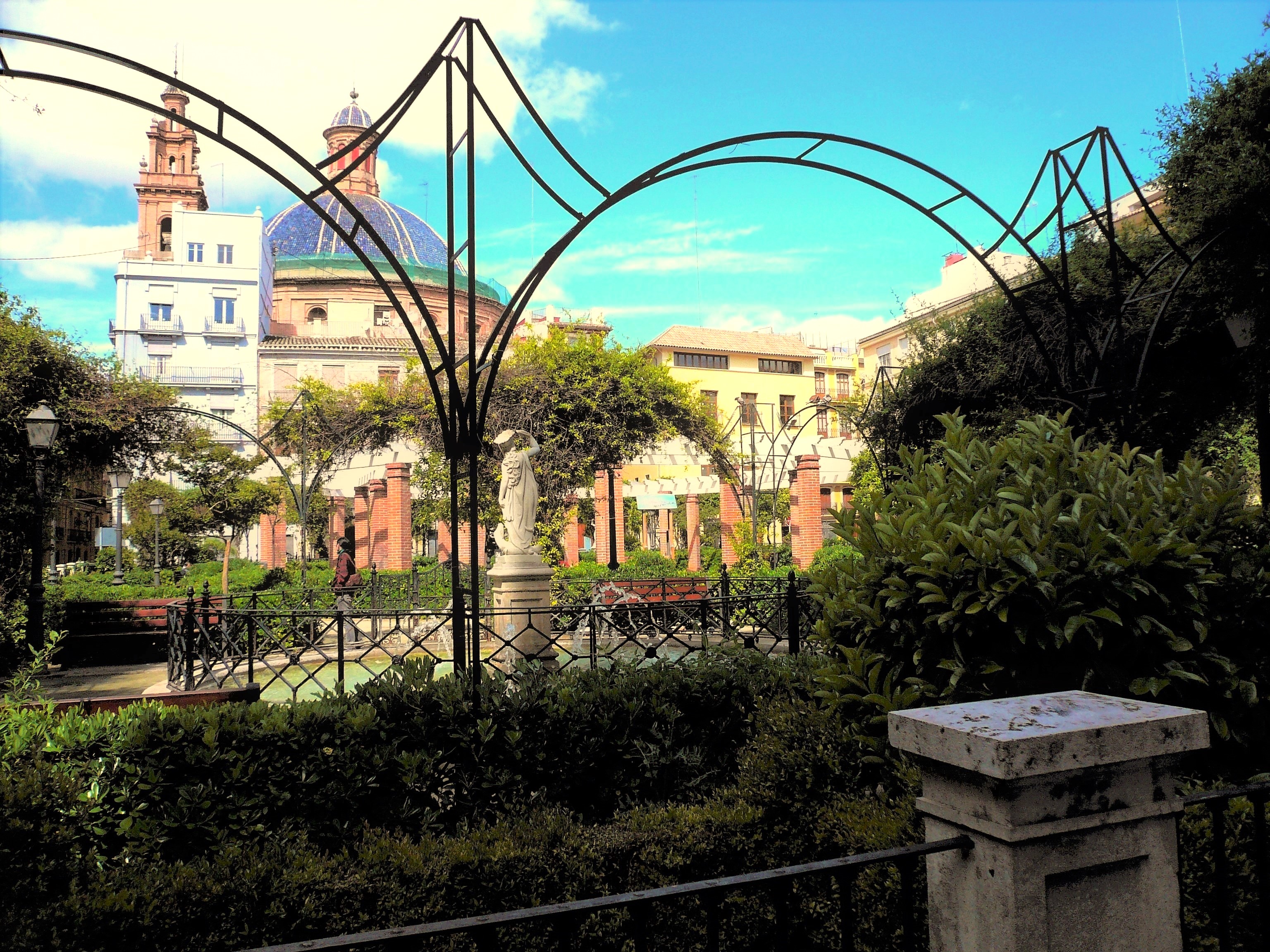In this square are the Parcent gardens. The square occupies the space where Parcent's palace used to be, of which we see in the image the old doorway, which now serves as the entrance to the gardens.
The garden has four circular fountains, one in each corner, with female sculptures.
















